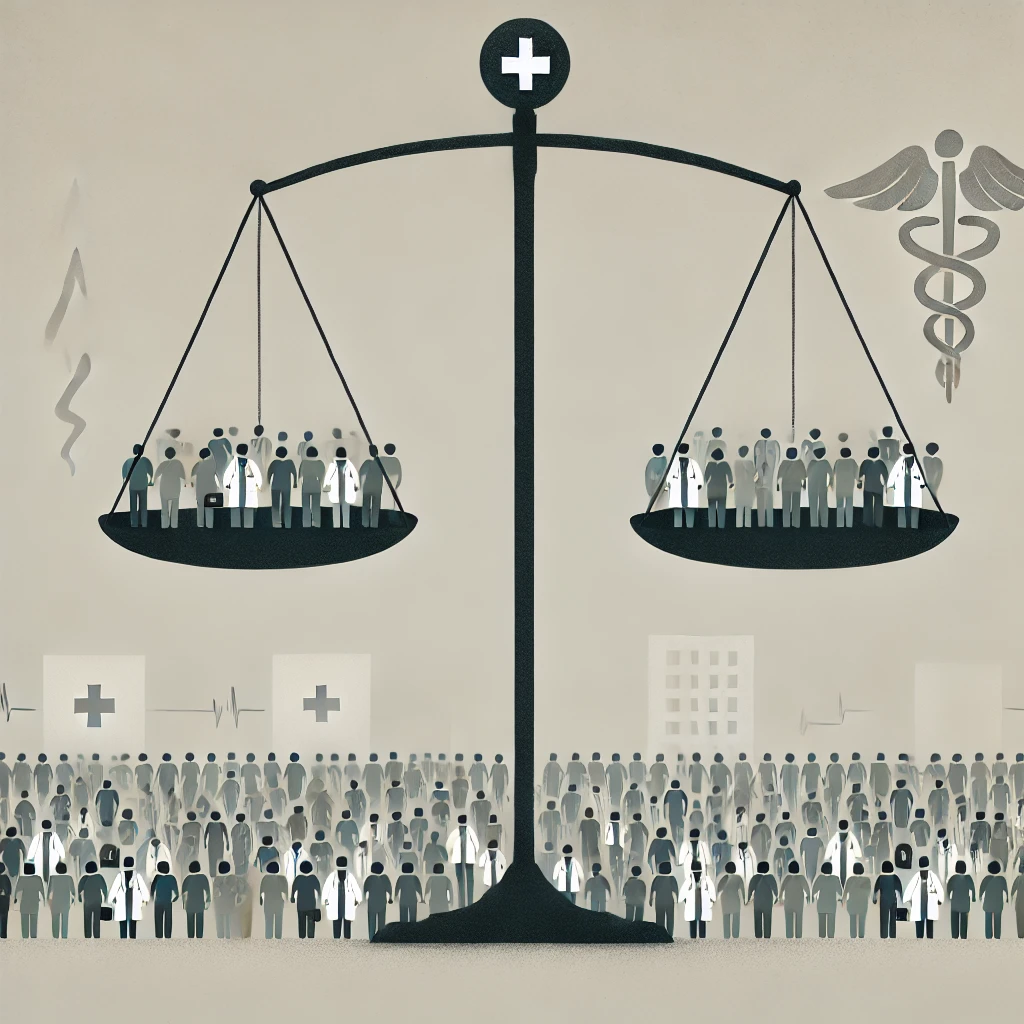The healthcare industry is facing a crisis of capacity. As patient demand surges due to aging populations, the rise of chronic diseases, and the expansion of healthcare access, many health systems are struggling to keep pace. This growing gap between the demand for care and the resources available to provide it has serious consequences, including longer wait times, diminished care quality, and increased provider burnout. The question facing healthcare organizations is how to effectively bridge this gap before it leads to more severe breakdowns in care delivery.

The Drivers of Rising Patient Demand
Several key factors are contributing to the increasing strain on healthcare systems globally. The most significant include aging populations, the prevalence of chronic diseases, and expanded access to care through policy changes and technological advancements.
1. Aging Populations
One of the most significant factors driving patient demand is the aging of the global population. In the U.S. alone, roughly 10,000 people turn 65 each day, and by 2030, all baby boomers will be 65 or older. As people live longer, they also tend to have more complex and ongoing healthcare needs. The elderly population typically requires more frequent medical care, including management of chronic diseases, increased hospital visits, and long-term care services. This trend places a growing burden on healthcare systems already operating near capacity.
2. The Rise of Chronic Diseases
Chronic diseases such as diabetes, heart disease, and cancer are on the rise, particularly in developed countries. According to the World Health Organization (WHO), chronic diseases are responsible for nearly 70% of all deaths globally. As the prevalence of these conditions grows, so does the demand for long-term care and management. Unlike acute conditions, chronic diseases require ongoing, often lifelong treatment, which puts continuous pressure on healthcare providers and facilities.
3. Expanded Healthcare Access
In many countries, healthcare access has expanded dramatically over the past few decades due to both policy reforms and advancements in technology. For example, the Affordable Care Act (ACA) in the U.S. provided millions of previously uninsured Americans with access to healthcare services. Similarly, the rise of telemedicine has enabled more people to seek care who may have faced barriers due to location or mobility issues. While increasing access is a positive development, it has also led to an unprecedented surge in demand, stretching healthcare providers thin.
The Consequences of a Struggling System
As healthcare systems try to accommodate growing demand, several troubling consequences are emerging: longer wait times, reduced quality of care, and widespread provider burnout.
1. Longer Wait Times
Longer wait times are one of the most immediate and visible outcomes of healthcare systems struggling to meet demand. Patients are waiting longer to see specialists, undergo diagnostic tests, and even receive emergency care. In countries like Canada and the U.K., wait times for non-urgent surgeries can stretch for months. In the U.S., where access is more fragmented, wait times in emergency rooms and for primary care appointments have also risen sharply. These delays not only frustrate patients but can also lead to worsened health outcomes, especially for those with chronic or life-threatening conditions.
2. Reduced Quality of Care
As the pressure on healthcare systems increases, the quality of care can suffer. Physicians and nurses may have less time to spend with each patient, leading to rushed appointments and an increased risk of errors. Furthermore, overcrowded hospitals and clinics may struggle to maintain proper infection control protocols or provide personalized care. The lack of resources also limits the ability of healthcare providers to invest in new technologies or hire additional staff, both of which are essential to maintaining high standards of care.
3. Provider Burnout
Perhaps the most concerning consequence of this growing gap between supply and demand is the burnout epidemic among healthcare providers. Physicians, nurses, and other healthcare workers are experiencing unprecedented levels of stress, with many reporting exhaustion, emotional fatigue, and feelings of depersonalization. According to the National Academy of Medicine, burnout affects 35-54% of U.S. nurses and physicians. The strain of managing ever-increasing workloads without adequate support or resources is driving many healthcare professionals to leave the industry entirely, further exacerbating the workforce shortage.
Addressing the Gap: Potential Solutions
While the challenges facing healthcare systems are significant, there are several strategies that could help bridge the growing gap between patient demand and provider capacity.
1. Expanding the Healthcare Workforce
One of the most obvious solutions is to expand the healthcare workforce by training and hiring more physicians, nurses, and allied health professionals. However, this is easier said than done. It takes years to train qualified healthcare providers, and many regions are already experiencing shortages. Nonetheless, governments and healthcare organizations can prioritize investments in education and recruitment efforts, while also encouraging the use of mid-level providers, such as nurse practitioners and physician assistants, to help alleviate some of the burden.
2. Leveraging Technology
Technology can play a crucial role in helping healthcare systems manage increased demand. Telemedicine, for example, has already proven to be an effective way of extending care to remote or underserved populations. Artificial intelligence (AI) and machine learning can also be leveraged to streamline administrative processes, reduce the burden of routine tasks, and assist in diagnostics and treatment planning, enabling healthcare providers to focus on more complex patient care.
3. Promoting Preventive Care
Promoting preventive care is another key strategy for managing patient demand. By focusing on early detection and intervention, healthcare providers can reduce the need for more intensive, costly treatments later on. Preventive care initiatives, such as screenings, vaccinations, and patient education programs, can help reduce the prevalence of chronic diseases and improve overall population health.
The growing gap between patient demand and healthcare system capacity presents a serious challenge for healthcare providers worldwide. Factors such as aging populations, chronic diseases, and expanded access to care have placed unprecedented pressure on healthcare systems, leading to longer wait times, reduced care quality, and increased provider burnout. However, by expanding the healthcare workforce, leveraging technology, and promoting preventive care, healthcare organizations can begin to bridge this gap and ensure that they continue to deliver high-quality care in an increasingly complex healthcare environment.
